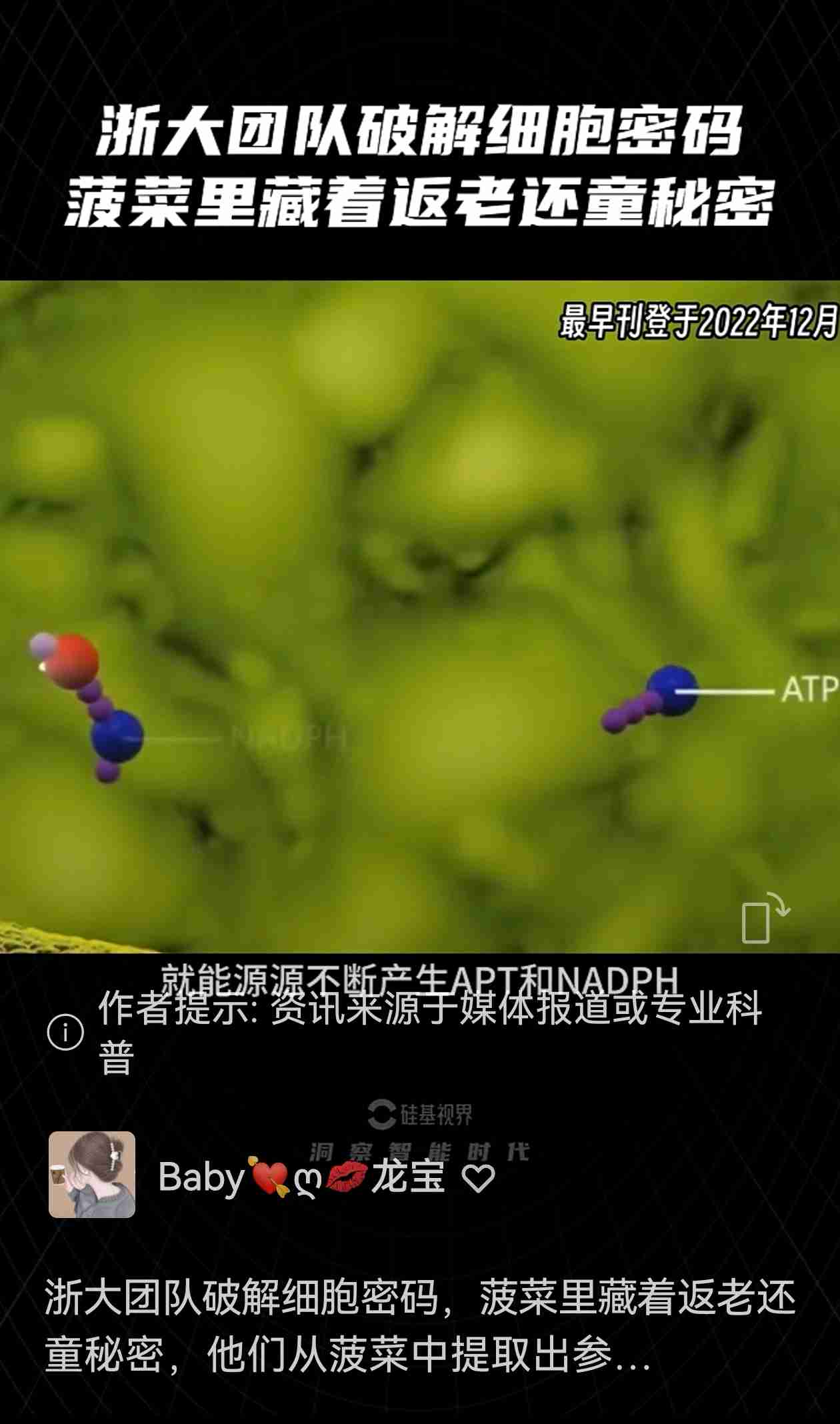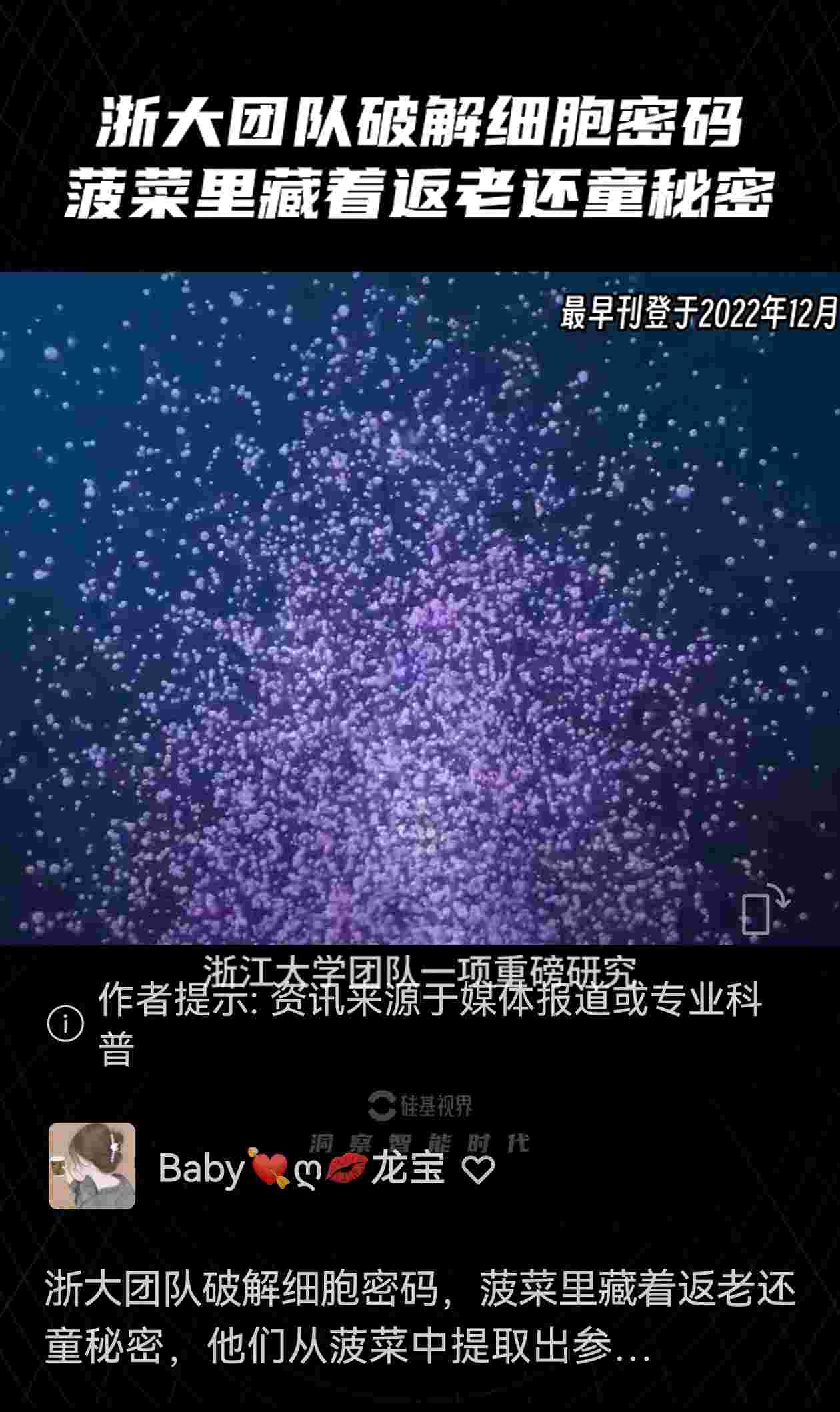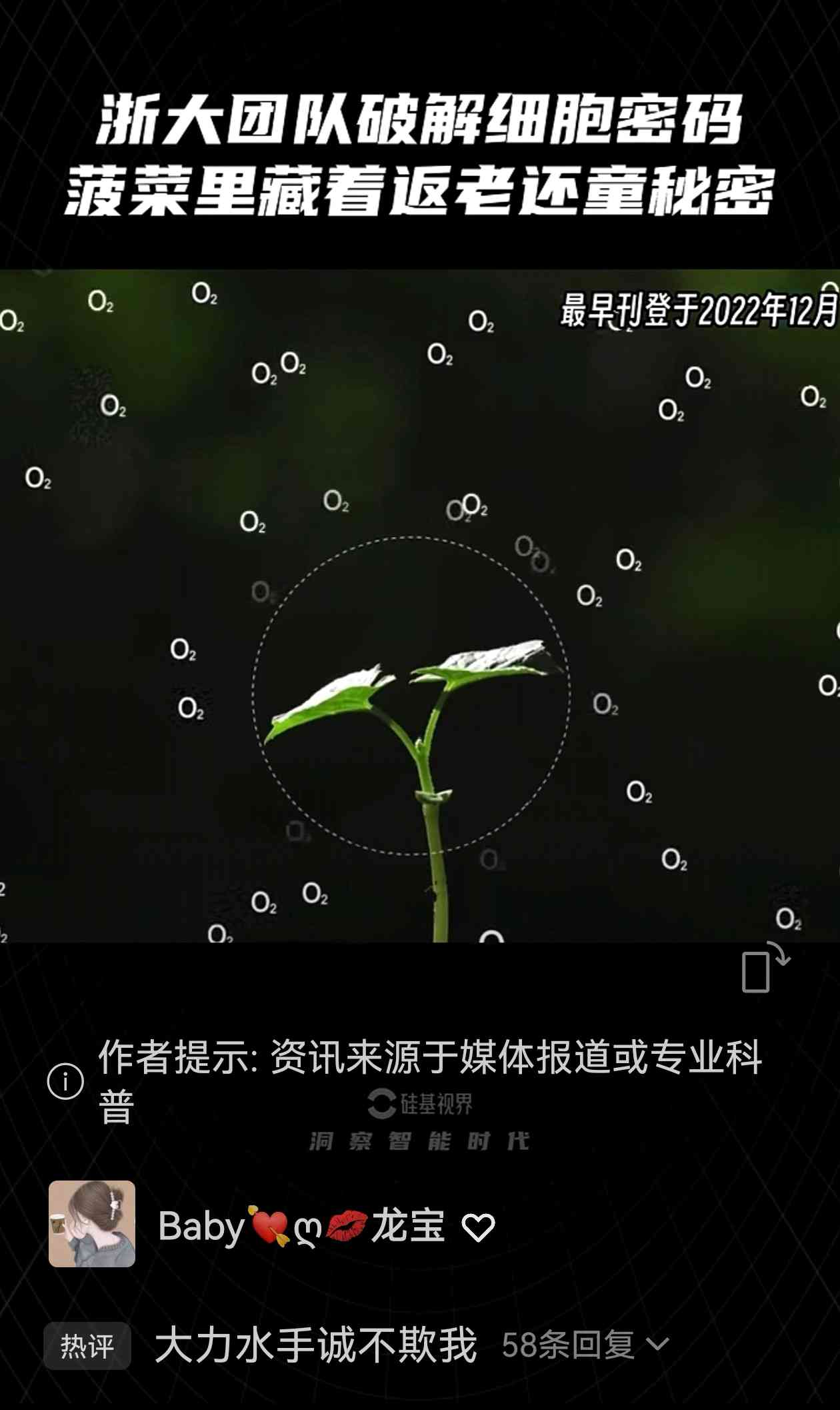


浙江大学团队融合医学与化学领域智慧,实现突破性研究:从菠菜中提取光合作用核心结构——类囊体,通过 细胞膜纳米伪装技术,将其跨物种递送至动物衰老病变细胞内。类囊体在光照下持续合成细胞“能量货币”ATP和还原当量NADPH,系统性逆转细胞代谢衰退。在骨关节炎小鼠模型中,衰老软骨细胞从“人类60岁状态”逆转为“20岁活力”,关节功能显著恢复。该成果登上《自然》(Nature),突破跨物种能量传递难题,为骨关节炎、神经退行性疾病等代谢相关病症的治疗开辟新方向,更以“植物-动物”跨界协作,为抗衰老医学注入全新思路。

A research team from Zhejiang University achieved a groundbreaking breakthrough by integrating medicine and chemistry: They extracted thylakoids (core structures for photosynthesis) from spinach and delivered them into senescent animal cells across species using a cell membrane nanocoating technique. Disguised by mammalian cell membranes to avoid immune rejection, these thylakoids continuously produce ATP (cellular energy currency) and NADPH (reducing power) under light, systematically reversing cellular metabolic decline. In osteoarthritis mouse models, aged chondrocytes regained a "20-year-old" youthful state from a "60-year-old" condition, with significant joint function restoration. Published in Nature, this study overcomes the cross-species energy transfer barrier, opening new avenues for treating metabolic-related diseases (e.g., osteoarthritis, neurodegeneration). It also showcases interdisciplinary innovation in plant-animal collaboration, illuminating a promising path for anti-aging medicine.